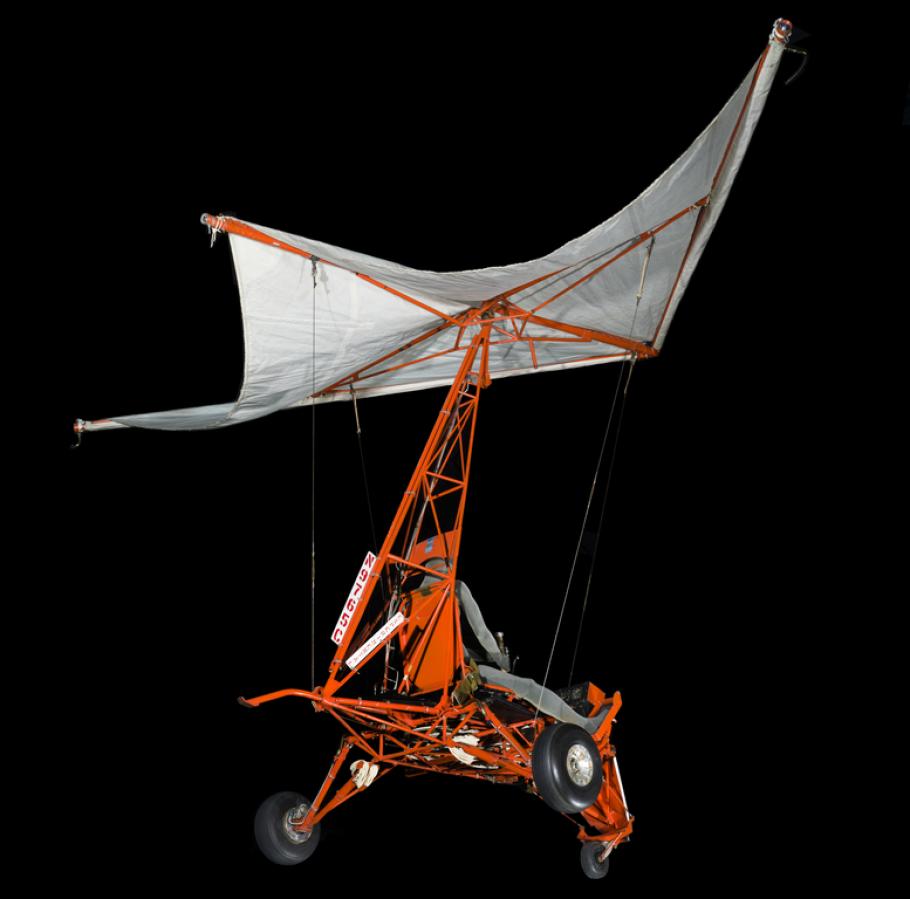From 1962 to 1964, NASA used the Paresev to develop the technology for landing the two-man Gemini capsule on land, instead of parachuting into the ocean, as had been done in Project Mercury. The astronauts would release an inflatable paraglider wing based on the work of Francis Rogallo, and maneuver to a runway or dry lake bed. Astronauts "Gus" Grissom and Neil Armstrong were among those who piloted the Paresev during several hundred flights at Edwards Air Force Base in California. The Paresev was towed by a ground vehicle or a small aircraft and released at an altitude between 5,000 and 12,000 feet. It was tested with three different wings; the 1-A is the first configuration. Before the paraglider concept could be fully developed for the Gemini program, NASA decided to stick with the proven technology of parachutes and water landing.
NASA transferred the Paresev to the Smithsonian in 1968.
Display Status
This object is not on display at the National Air and Space Museum. It is either on loan or in storage.
Object Details
Country of Origin
United States of America
Type
SPACECRAFT-Crewed-Test Vehicles
Manufacturer
NASA Armstrong Flight Research Center
Dimensions
Overall: 11 ft. 3 in. tall x 7 ft. 5 in. wide x 8 ft. deep, 485 lb. (342.9 x 226.1 x 243.8cm, 220kg)
Materials
Tubular steel; Dacron wing; rubber wheels
Alternate Name
Gemini Paraglider Research Vehicle 1-A with Wing
Inventory Number
A19700076000
Credit Line
Transferred from the National Aeronautics and Space Administration
Data Source
National Air and Space Museum
Restrictions & Rights
Open Access (CCO)
For more information, visit the Smithsonians Terms of Use.








